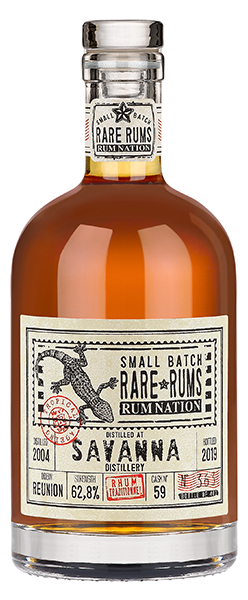So what do you do after a few reviews of mostly Ex-Bourbon cask matured Whiskies? Yep, you’ve got it, you try to find a Sherry bomb to review, and as luck would have it, I just have such a thing still waiting on my lectern to be reviewed. Back in the day when one wanted a very good Sherried Whisky, one would turn to the likes of Longmorn, Strathisla and Macallan. After that, I remember Glendronach 15yo, (not the Revival one, no the one before that), was a nice alternative to Macallan 18yo (and the 15yo when it existed in some years). In more recent years, Macallan changed direction somewhat, so, Glendronach, Tamdhu and even more recently Glenallachie seem to be the, more affordable, go to Sherry bombs these days. Glenallachie 15yo seems to be rather popular, although it didn’t really convince me (yet).
Many independent bottlers are coming out with a lot of young first fill Sherry bottlings as well. Parallel to all this Sherry Bomb activity, there has always been Aberlour, especially with their A’Bunadh bottlings, and to a somewhat lesser extent with some single cask bottlings, which are less available and more expensive. Simply because they aren’t flooding the market with those, it’s giving me the feeling that if they do release a single cask bottling, it must be something of an exceptional single cask, a stunner so to speak. So when this was sold locally, I just couldn’t resist the looks of it, and bought it. I’m a sucker for those dumpy bottles, I just had to have it. Now the time has come to find out if this is an exceptional single cask or not, and if #13330 and #4934 are anything to go by, both are first fills as well by the way,…well you’ll understand that expectations run high by now.
 Color: Orange-red-brown.
Color: Orange-red-brown.
Nose: Sherry alright. Dusty oak and meaty. Cold gravy and animal fat. Quite heavy Sherry and a cellar type smell, yet also vibrant and fresh. Dull dishwater and fresh air, here a wonderful combination. Rhum Agricole from Martinique, not funky enough for Réunion. Very aromatic and again a well balanced nose. The stars seem aligned a bit in my house, since a lot of the previously reviewed Whiskies showed some really good balance as well. Seems a bit syrupy and muddy at times, but not all the time. Quite clean otherwise, due to its freshness and lemony aroma’s. Old dry nuts still in their shell, lying in a bowl on the table, not touched for a while since the nutcracker broke. Still fresh with sometimes a more organic (slightly farty) whiff flying by. Almonds and Sinaspril (an artificial smell of old orange powder). This is a Whisky that needs the warmth of your hand to unlock all the fine aroma’s. So don’t hold your glass by the stem of foot, but just keep it in your hand, moving it around a bit. If anything, this lacks the promise of a wee bit of sweetness or creaminess, although some of this is emerging, (honey notes now), if you keep the glass around for half an hour or so. Only after sipping a tiny hint of spicy sulphur comes forth, mixed in with licorice (Bassett’s, which emerges even later). It’s a bit strict, like teachers used to be. In comes Pink Floyd now…
Taste: Medium syrupy and hot, woody, spicy start. Tarry vanilla powder, somewhat soapy and some artificial cherries, making it less exceptional on entry, but still quite good, don’t get me wrong here. Let’s say right of the bat, that this is not recommended for novices. Next, fruity syrup, some spices and some good old wood. Cinnamon, cola, star anise and a light to medium, (depends on the moment), and soft, woody bitterness, in this case maybe taking away even some more from the exceptionalness (if that’s a word). Still, I have to mention this doesn’t bother me all that much every time around and on some days my perception of this differs from other days. Some hidden sweetness. On entry this might be a bit strange, not exactly perfectly balanced, the body is good though, but the finish shows a sort of fruity acidity which doesn’t fit the Whisky all that much, hurting the balance some more. Maybe the Sherry that was previously in this Butt wasn’t the best? I notice a slight soapy edge (again) on the sides of my tongue some time after swallowing. Medium length finish with some soap to it and this lingers on even longer in a long warming aftertaste. Seems older than 13yo.
This is a bit of a chameleon Malt, on some days I like it more and get something else out of it than on other days, yet another point why this might not be for novices. I wouldn’t even recommend an A’Bunadh for novices though, all of the batches, especially with these kinds of ABV. It definitely has quite a few good sides, but to be honest, when looking at the wonky bits, I’m not entirely sure why this cask was picked out for a single cask bottling, not for the general public I guess. It’s just not exceptional, although it is most definitely a very interesting bottling for anoraks. Sure it has its strange bits, but in a way I do like it, it is another take on Aberlour. Case closed.
Points: 86
 Color: Light gold.
Color: Light gold. Color: Copper Orange.
Color: Copper Orange. Color: Bright orange gold. Radiant with a pink hue.
Color: Bright orange gold. Radiant with a pink hue. Color: White Wine
Color: White Wine Color: White Wine.
Color: White Wine. Color: Gold.
Color: Gold. Color: Copper gold.
Color: Copper gold. Color: Light gold.
Color: Light gold. Color: White wine.
Color: White wine.